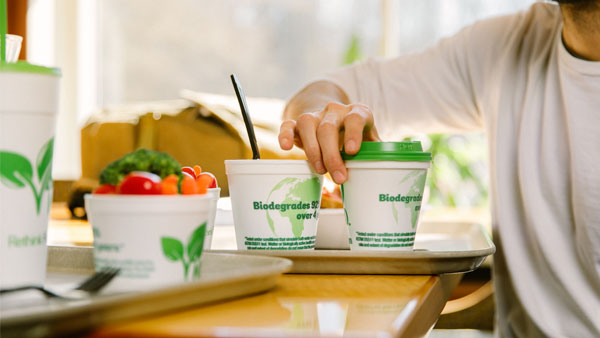Healthy Drinks, Healthy Planet

Which beverage trends will drive traffic and growth in 2019 and beyond? The buzzwords that consumers and bar operators are repeating today include mindfulness, wellness and sustainability. People are focused on what they drink, both in terms of health attributes and how it impacts the planet.
Wellness rules
Wellness is the prime factor in the rising stars of the beverage category. Functional beverages are big this year. The health benefits of fermentation-think probiotics-are driving interest in foods like kimchi, sauerkraut, kefir and pickles, and that’s reflected on the drinks side by puckering potions such as kombucha, shrubs and switchel and drinking vinegars.
Clearly, Americans are developing a taste for sour. Sour beer styles are proliferating-including the likes of goses, wild ales, lambics and fruity kettle sours-as consumer interest grows.
Similarly, in a reaction against excessive consumption of refined sugar, more beverages are being naturally sweetened with fruit juices, honey, maple syrup, agave syrup and stevia rather than high fructose corn syrup or artificial sweeteners. This applies to housemade cocktails as well as bottled drinks and even fountain options.
Mocktails and sessionable beverages
Until lately, mocktails have been an afterthought on most bar and restaurant menus, but that’s changing. According to Kimpton Hotels & Restaurants’ 2019 Culinary & Cocktail Trends, 80% of bartenders are featuring more non-alcoholic cocktails on their menus.
Operators are employing the same ingenuity and techniques to create these no- and low-alcohol drinks as they do house cocktails by incorporating house-flavored syrups, fermented components-such as kombucha and shrubs-and new, non-alcoholic “spirits” now on the market.
For those who just want a lower-alcohol option but aren’t abstaining totally, diners can choose from a variety of sessionable beers-brews that offer a lower ABV, in styles ranging from pilsners to IPAs.
Golden opportunity
Bright, sunny drinks are mood-boosting and Instagrammable, which is why yellow is a trending food color of the year. Additionally, turmeric is the top new cocktail flavor, according to Kimpton’s study. The vibrant yellow spice lends its bright aura and anti-inflammatory qualities to healthy shakes, sodas and cocktails.
Top it off
Gone are the days of plastic monkeys and paper umbrellas. Instead, dehydrated fruit wheels and slices of blood oranges, apples and pears, as well as edible flowers, are trending toppers for cocktails and mocktails.
Ice cubes are not just for chilling drinks. Innovative bartenders are freezing cocktail ingredients such as juices, purees and modifiers, to add flavor as they melt rather than dilute drinks. Trendy operators have custom-made cubes with their logo embossed or engraved in the ice face. With this innovation, their concept is top-of-mind every time the customer takes a sip.
Sustainability matters
Customers care about the environment, and they want the restaurants they patronize to care about it too. According to Technomic’s 2018 Generational report, 19% of consumers say they are more likely to visit a restaurant that has the same political views as them, and that can include environmental and sustainability efforts. Those numbers are more prevalent among younger diners especially-24% of Gen Z and 27% of millennials.
In turn, bars appear to be taking the lead in reducing their carbon footprint.
Eighty-eight percent of bartenders consider sustainability whenever they design a cocktail for their menu and are embracing new approaches to sustainability, according to the Kimpton study.
This includes cross-utilization of ingredients between kitchen and bar, use of edible garnishes and room-temperature cocktails. A key area of environmental concern is finding alternative straw options to traditional plastic, including biodegradable, compostable and reusable options.
Some operators are turning to Vio® biodegradable* straws from WinCup. Available in 7.75-in. and 10.25-in. lengths, Vio straws biodegrade* 88.5% over seven years. WinCup also offers Vio 5-in. stirrers made from the same biodegradable* material.
From new flavors to health attributes to sustainability, there’s a lot to keep an eye on this year when it comes to beverage menu success.



